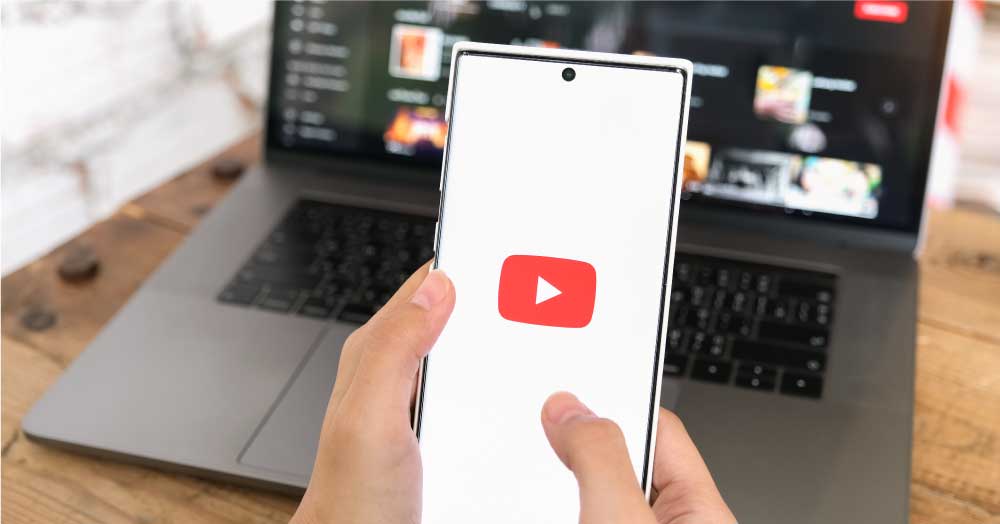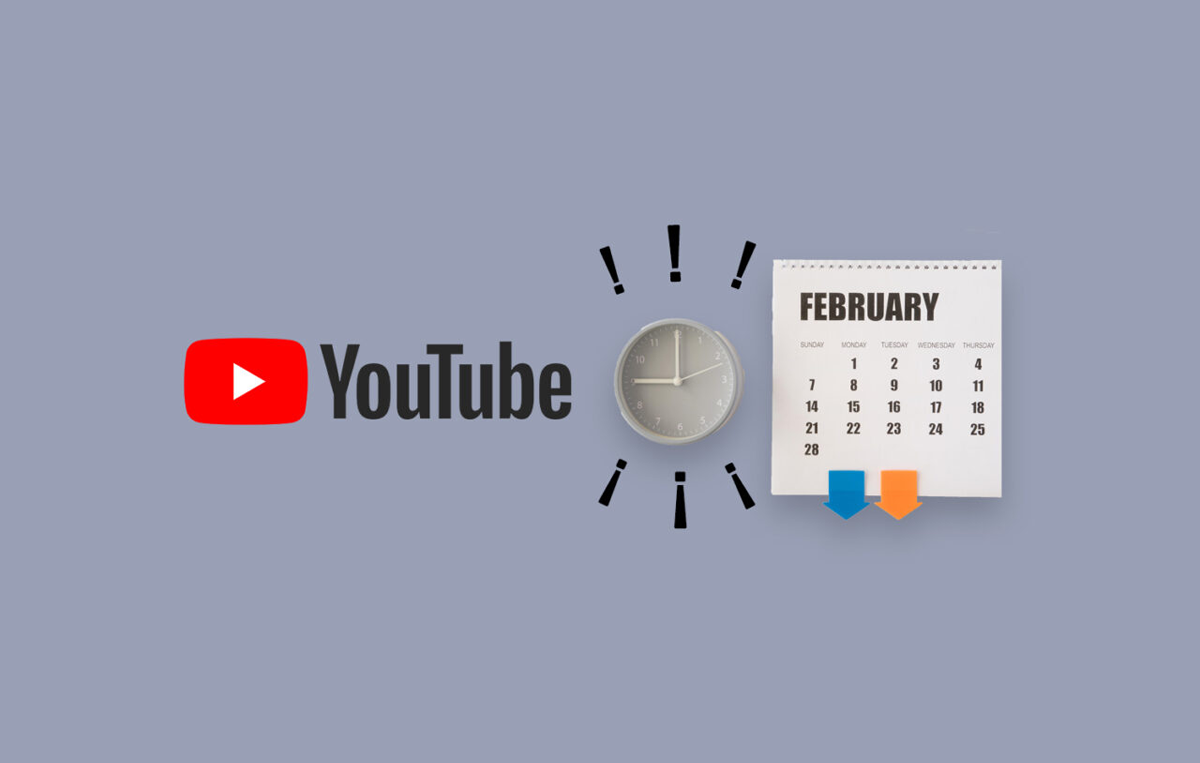Every second, YouTube’s recommendation system scans billions of videos and trillions of data points to figure out what viewers will love next. It studies your watch history, engagement patterns, recommendation survey, and even the kind of content you pause on, all to keep you watching just one more video.
According to the Pew Research Centre, 81% of American YouTube users say they watch YouTube videos suggested by the YouTube search algorithm. That makes it essential for creators and marketers to understand how this algorithm works to reach the right audience.
In this article, we’ll break down how the YouTube algorithm works in 2025 and beyond, what factors influence video recommendation rankings, and provide optimization tips to grow your reach.
TL;DR
- The YouTube algorithm decides what videos appear on your homepage, Shorts feed, suggested section, and search based on each viewer’s behavior and interests.
- It tracks signals like watch time, likes, comments, click-through rate, and overall viewer satisfaction to recommend content people are most likely to enjoy.
- For long-form videos, consistency, audience retention, and quality storytelling help your content rank higher and reach new viewers.
- For YouTube Shorts, completion rate, quick engagement, and replays matter more than video length or posting time.
- YouTube Recommendations update in real time, meaning the more viewers interact with your videos, the better your future reach becomes.
What Is the YouTube Algorithm?
The YouTube algorithm is a complex system that recommends and ranks videos based on user behavior and video performance. Its main goal is to increase user satisfaction and watch time by showing content that users are most likely to enjoy based on their content preferences and engagement patterns, such as likes, shares, comments, and watch time.
Based on this, YouTube recommended specific content to each user on the homepage, in suggested videos, in Shorts, and in the search tab to keep users on the platform and increase watch time. Each time you log in, YouTube recommendations get updated based on real-time behavior rather than just showing trending content or previous history.
When YouTubers and businesses know what affect videos ranks and recommendations, they can fine-tune content strategy, upload timing, and engagement tactics to align with how viewers actually discover and consume videos.
YouTube Algorithm Updates in 2025
YouTube has rolled out significant updates to its recommendation and trending content algorithms in 2025, aiming to enhance user experience and content discovery.
Here’s what creators and marketers need to know:
1. End of the Traditional Trending Page
YouTube’s Trending and Trending Now pages will be officially discontinued from July 2025, as per the Google updates. The update changes how people discover trending content; now, YouTube has category-specific charts based on industry-based and local trends like Trending Music Videos, Weekly Top Podcast Shows, and Trending Movie Trailers instead of a common regional or global trending list for all.
These adjustments are made to appeal to different communities interests and micro-trends across. This means now trending content will change for each user based on their region, language, interests, and watch history, as it provides a more personalised and relevant experience to the user.
2. Enhanced Personalization with AI
YouTube’s recommendation algorithm now uses powerful AI to give hyper-personalized content. The algorithm customizes suggestions for each user based on multiple parameters such as watch history, device usage, and viewing time. So, now marketers need to create videos based on audience personal patterns and habits.
For example, if a user views funny shorts during lunch breaks and long videos in the evening, then the recommendation algorithm will adapt changes accordingly. This trend improves user satisfaction and engagement above traditional metrics such as click-through rates.
3. Short-Form Content’s Growing Influence
Google notified in March 2025 that YouTube updated its view-counting method for Shorts, as its influence is increasing day by day. YouTube Shorts views are now counted when a video starts playing or replays, rather than requiring a specific watch duration.
This change aims to provide a more accurate measure of Short’s reach and engagement, and is also useful in finding which shorts should be recommended to new audiences. For example, a Short that captures immediate attention will have its view count reflect its initial impact more accurately.
4. Quality Beats Channel Size
The YouTube algorithm now focuses more on how viewers react to your video or how much time they stay, not on how many subscribers you have or how many videos you have uploaded so far. If people enjoy your content and stay engaged, it will get recommended to a wider audience.
For example, a small travel vlogger with only a few hundred subscribers uploads a video titled “How to Explore Japan on $50 a Day.” The video initially receives high engagement and watch time compared to top travel bloggers, then it soon begins to be recommended above top travel creators. So, start creating quality content even if you have just a few subscribers. Focus on quality, not quantity.
And most importantly, if you don’t stick to the YouTube guidelines, the algorithm won’t care about the numbers you are making and will immediately demonetize or remove your video and, in some cases, your channel too, if it finds something objectionable.
How YouTube Algorithm Recommends and Ranks Videos
YouTube’s algorithm isn’t about randomly guessing what to show you next, but rather comes after an analysis of every click, view, and scroll you make to determine what you are likely to watch and engage with. Whether it’s a long-form video or a short guide, the system ranks and recommends videos based on how well they engage viewers, and matches individual interests.
Here’s how the YouTube algorithm works:
1. Engagement and Watch Behavior
Still, the YouTube algorithm heavily relies on traditional engagement factors (such as click-through-rate, watch duration, likes, shares, and comments) to determine whether the video is worth recommending or not.
Key signals that show video is engaging:
- Click-Through Rate (CTR): How often people click on your video when it appears in search or recommendations.
- Watch Time & Retention: How long viewers stay and how much of your video they actually watch.
- Likes, Shares & Comments: These interactions tell YouTube that people found value in your content.
- Negative Feedback: Sometimes, YouTube shares recommendations from whenever you add a new channel or niche video, your feed gets feedback, e.g., is it relevant to your interests or not? So, if a video receives too many “Not Interested” responses, YouTube can reduce reach to a new audience.

As a marketer, you can use strong thumbnails and clear titles to improve CTR and add value to retain existing subscribers.
2. Viewer Satisfaction After Video Completion
YouTube doesn’t only care about subscribers or views on videos, but also cares about how satisfied viewers feel after watching. It measures this through:
- Satisfaction Surveys: The platform collects feedback through millions of user surveys by asking questions like “Was this video helpful?” or “Did you enjoy watching this?”
- Post-Watch Behavior: Do viewers keep watching or leave YouTube after your video? Especially for videos that address specific queries.
- Replays & Return Viewers: If people come back to or rewatch your content or share it with others, YouTube considers those videos as high-quality content.
All data directly goes to the algorithm in real-time and increases or decreases the rank based on that.
3. Personalized Recommendations
Each user sees a different homepage and set of video recommendations, even if they belong to the same niche or are watching the same video at the same time. Why? Because YouTube’s algorithm generates personalized recommendations based on various factors, such as:
- Watch History: What you’ve watched before, what you watch daily at that time, and how you interact with it.
- Time & Device: If you prefer short videos on your phone and longer ones on TV, YouTube adapts and recommends based on that.
- Viewing Patterns: Even how often and when you watch affects your recommendations. For example, if you watch sports in the evening and yoga videos in the morning, YouTube will adjust to show you content that fits those habits.
- Niche and Channels: The channels and types of videos you watch most frequently also shape your feed. If you often watch self-motivation videos from a specific channel, YouTube will suggest similar or related content based on your recent interactions.
YouTube has a very strong personalized recommendation algorithm that naturally fits content into your feed or home page according to your daily viewing patterns.
4. Content Relevance and Expertise
As AI and data science continue to advance, YouTube’s algorithm has become much better at understanding what a video actually offers, the problem it solves, the tone it uses, and the structure or style it follows. This deeper understanding helps YouTube decide who to recommend a video to and who might not find it relevant.
For example, if someone reviews a tech product in simple, casual language, that video may be shown more often to non–tech-savvy viewers. On the other hand, an in-depth, highly technical review filled with industry jargon might be recommended to professionals or enthusiasts who regularly engage with advanced tech content.
YouTube also classifies videos by expertise level, such as beginner-friendly, intermediate, or expert-level content. This ensures that viewers see videos that match their current knowledge and interests, creating a more satisfying experience.
There are many more factors that the algorithm considers, such as Topic depth covered, information accuracy, creator authority, and viewers’ comments.
4. Long-Term & Evergreen Relevance
In 2025, YouTube brought back years-old long-form content to life for various niches that have not lost relevance with time, such as book reviews.

5. Global and Multi-Language Optimization
With growing globalization, YouTube has introduced strong support for multilingual content. Translated titles, subtitles, and dubbed versions can dramatically increase your video’s visibility across the globe and increase your audience base. Creators and businesses can even track performance separately for each language, helping them understand audience behavior in different regions.
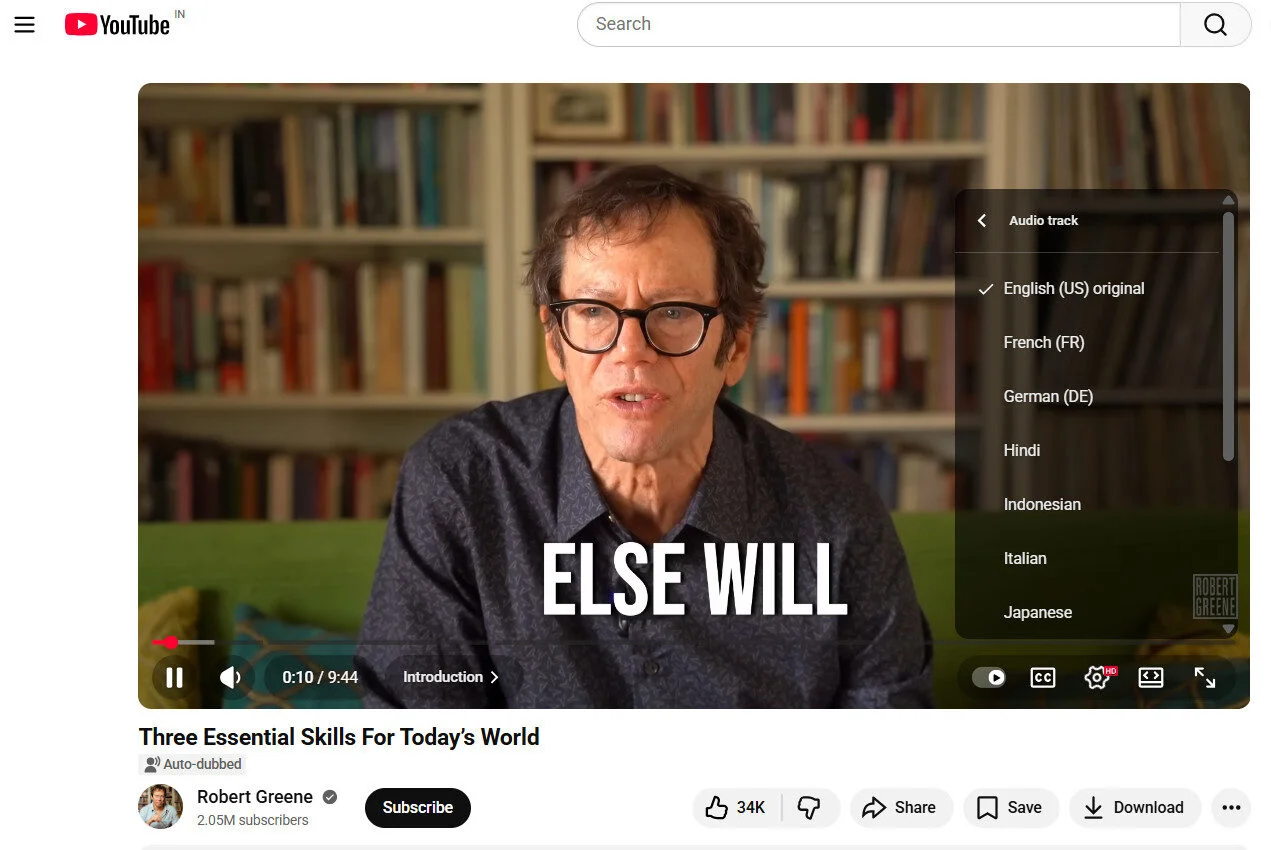
If you’re a YouTube marketer, consider publishing your videos with multiple audio tracks or dubbed versions for various languages. This approach presents significant global growth opportunities, particularly for international brands and creators who want to reach audiences worldwide.
Why? Because when your content is translated into regional languages, it becomes local content, and the YouTube algorithm prefers local content for recommendations.
6. External Factors That Affect Recommendation and Ranking
There are many YouTube recommendations factors that you can’t control as a creator or marketer. Here we’ve listed a few of them:
- Seasonal Trends: YouTube traffic changes throughout the year. For instance, if your fitness videos see fewer views in December. Don’t take it personally, your audience might be busy with holidays.
- Competition: Sometimes, you’re up against big names or verified channels. For example, even if you create an amazing case study or business review, if Harvard Business Review or The Wall Street Journal has published content on the same topic, their videos are likely to appear first because they carry more authority and credibility.
- Topic Popularity: Viewer interest and trends can change overnight. A topic that’s hot today might fade tomorrow. For example, remember how quickly fidget spinner videos went viral and then disappeared? Even a new channel with fewer subscribers can get more views than yours if it covers a trending topic at the right time.
NOTE:
There’re many factors that people think matter for the YouTube algorithm and your video’s reach, but they actually don’t. One of them is monetization; no matter if you’re earning from the YouTube Partner Program or have added an affiliate link to your description, it doesn’t affect how YouTube promotes your content.
The second one is posting Frequency; many creators think that if they don’t post frequently or at a specific time, their reach will drop. But that’s not true. YouTube has clarified that the timing between uploads doesn’t influence the performance of individual videos.
Where YouTube Recommend and Rank Videos
The ranking factors above work together in slightly different ways depending on where YouTube is recommending your videos.
YouTube shows recommended videos in three main places on the platform.
1. Home Page
When someone opens YouTube, the first thing they see is their personalized home feed. YouTube curates this feed based on a few key things:
- How well videos perform: Suggest either the latest videos based on things like clicks, watch time, and engagement (related to your interests and niche), or many suggestions based on recent watch history (more frequently watched content appears more in the home feed).
- What the user likes: Their past watch and search history, like you watch news channels, music, and sports, then there will be a separate section for each niche.
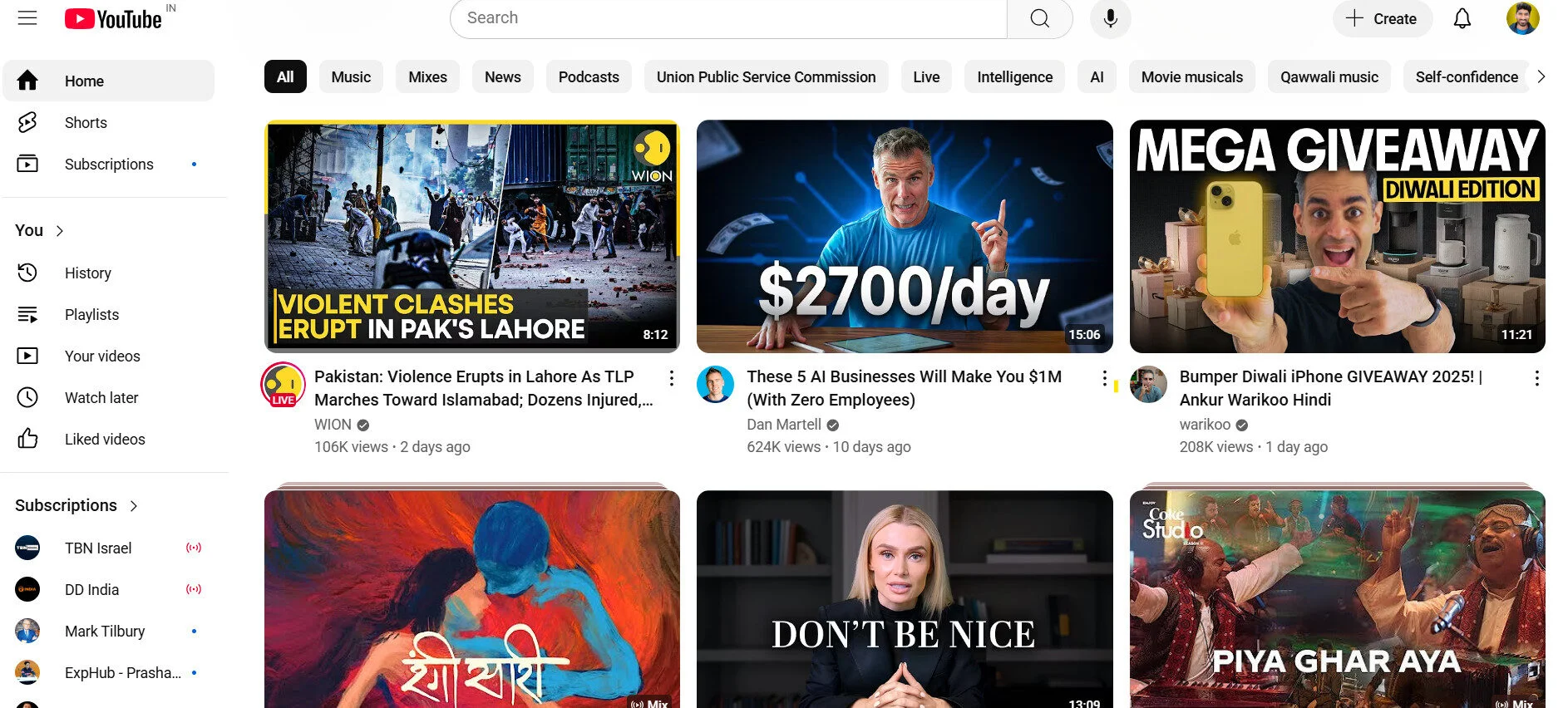
2. Suggested Videos
These videos appear alongside the one a user is currently watching, usually on the right-hand side. YouTube recommends them based on:
- Related to topic of the current video (topic, channel, creator, music, or niche is similar to running video)
- Related to viewer’s watch history (channel you subscribed to, channel you watched earlier, videos you added to watch later, topic you searched or watched recently)
- Content that people usually watch after watching a running video
This helps YouTube suggest what to watch next, keeping viewers engaged.
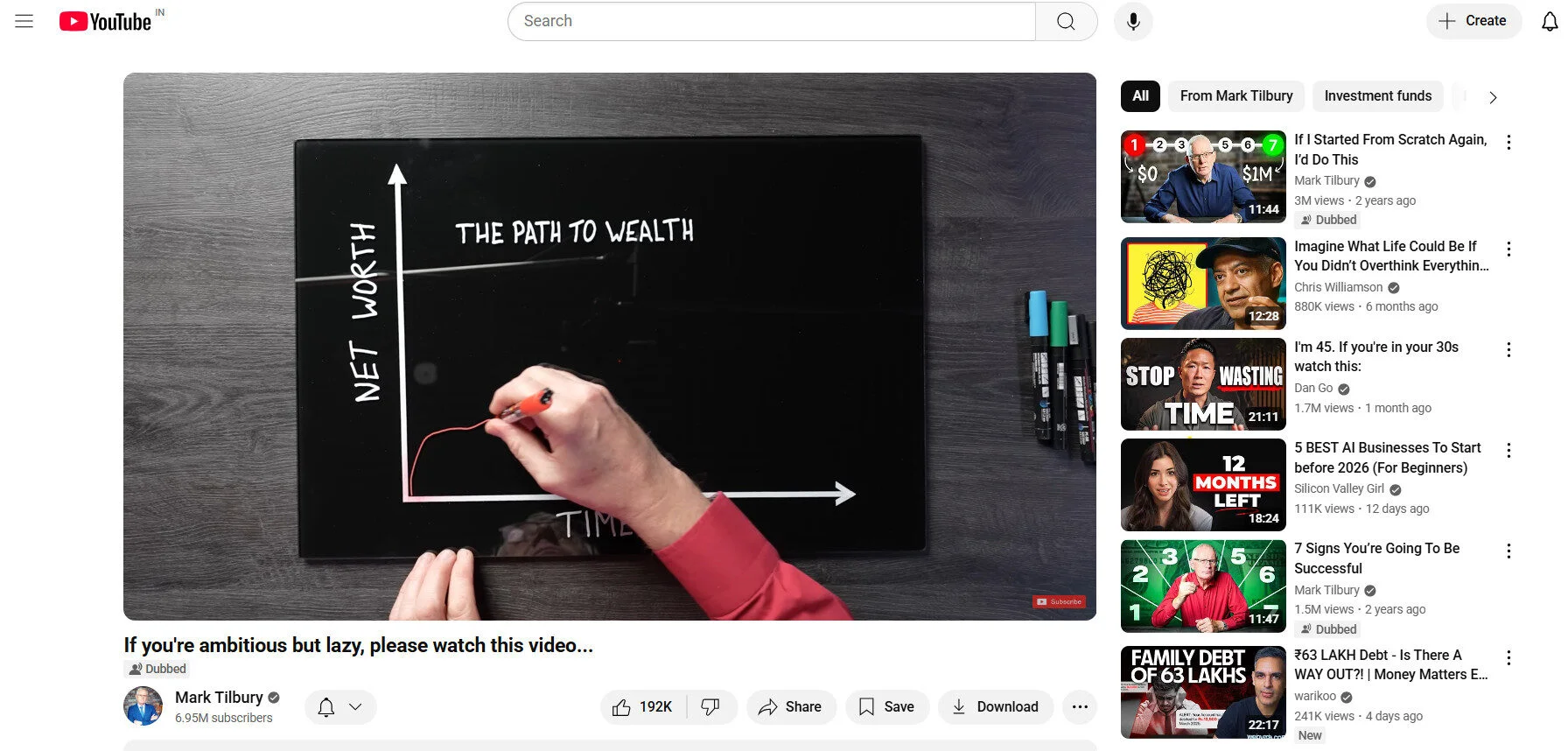
3. Search Results
Each user’s search results can look a little different because YouTube personalizes them using various signals.
These include:
- Relevance: How closely the video’s title, description, and content match the search term.
- Performance: CTR and metrics such as engagement, watch time, and overall popularity.
- Related to watch history: Any videos related to that keyword search you watched earlier, and videos on that topic from your subscribed channels.
- Shorts: As people’s attention span gets shorter, YouTube focuses on suggesting more shorts in any queries that can be addressed in 30-90 seconds.
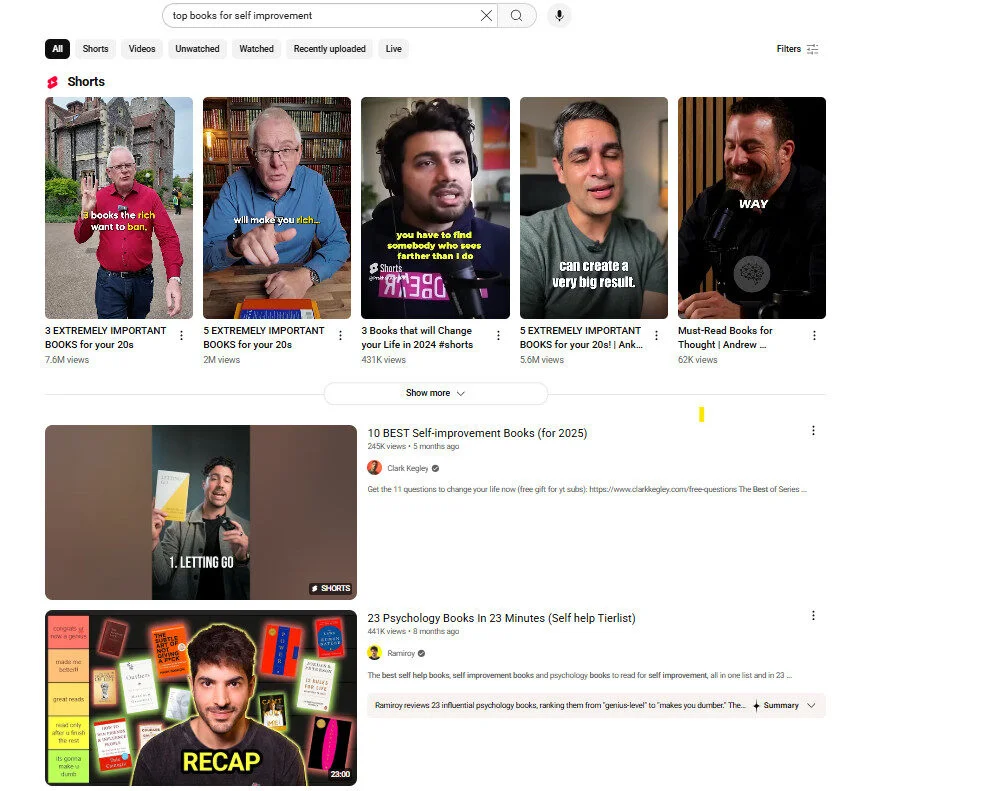
YouTube Shorts Algorithm: How It Works Differently
YouTube Shorts has exploded in popularity, and people now watch over 200 billion Shorts every day, according to YouTube CEO Neal Mohan. But unlike regular YouTube videos, Shorts are designed for swipe-based discovery. You don’t choose what to watch; you just keep scrolling, and YouTube Shorts Algorithm shows you what it thinks you’ll enjoy next based on your engagement patterns and interests.
Because of that, the Shorts algorithm works a little differently from the regular YouTube recommendation system. Instead of focusing on search intent or keywords, it looks at how viewers interact with each Short, things like engagement, watch history, and what’s trending right now.
How the YouTube Shorts Algorithm Works?
When you upload a Short, YouTube doesn’t just push it out to everyone right away. Instead, it first tests it with a small group of viewers who have engaged with similar content recently. If those viewers watch most of it, like it, or rewatch it, YouTube starts showing it to more people.
That’s why some Shorts go viral days or even weeks after posting, the algorithm keeps testing and expanding the audience over time. Also, YouTube has said that timing and how often you post don’t really matter. What counts most is quality and viewer response.
And unlike some other platforms, YouTube doesn’t count a “view” the moment someone scrolls past your Short. Viewers have to actually watch part of it, so watch duration (how long people stick around) matters a lot more than total views.
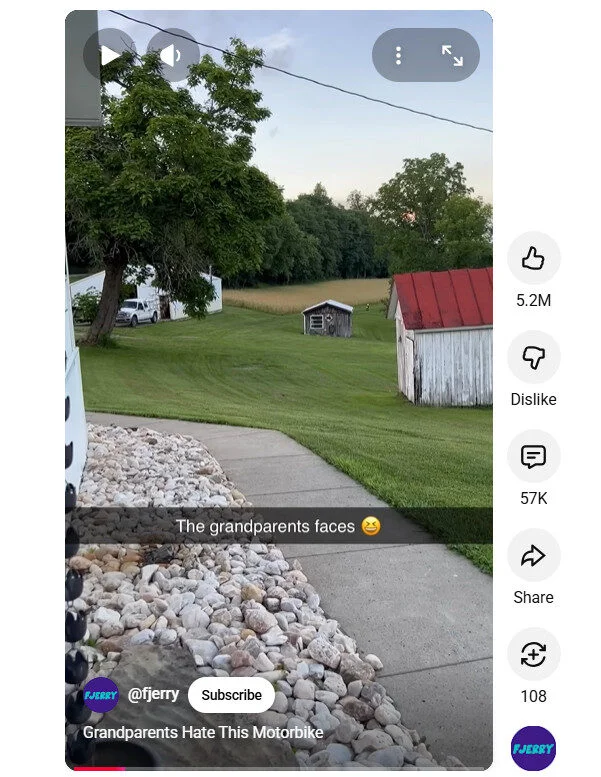
How does the YouTube Shorts Algorithm Rank Videos?
There are hundreds of factors that influence how shorts rank or are recommended to the audience. Here, we mentioned some of these factors:
- Engagement: Algorithm considers engagement factors like how many people like, comment, or share on your Short and updates recommendations in real time based on that.
- Swipe Rate: Shorts with a low swipe-through rate signal to the algorithm that content is valuable and needs to show more viewers.
- Watch Duration: It is not important how many people scroll through your short, but how much of the video people watch. So, a high average view duration means content is engaging.
- Replays and Loops: If people rewatch your Short or if it loops naturally, that’s a strong signal to recommend to others.
- Content Variety: YouTube avoids showing too many Shorts from the same creator in a row, unless viewers watch their videos in a loop or follow the channel regularly.
- User Preferences: Your feed is personalized based on what you’ve watched, liked, or skipped before.
Similarly, there are many things that don’t matter much for Short’s reach or virality, like thumbnails (as most shorts come in scroll feed where people are unable to see them), posting day or time, Upload frequency, and reposting after minor changes. Also, CTR is not a ranking factor for YouTube Shorts, unlike for long-form videos, as users don’t click on shorts; they automatically come in the feed, and people swipe through them.
For example: If you post a funny 20-second pet video that most viewers watch all the way through (and maybe even rewatch), YouTube will likely recommend it to a much wider audience, even if your channel is brand new.
If you like to optimize your YouTube Shorts for more views and reach more viewers, explore our article on how to get more views on Shorts.
10 Tips to Improve Your Organic Reach on YouTube
The YouTube algorithm pays attention to everything – what people search for, skip, or watch, to decide which videos to recommend and which to hold back. But understanding how the algorithm works isn’t enough. You also need to know how to use that knowledge effectively.
The key is understanding what your audience truly wants to watch and what keeps them engaged. When your content connects with viewers, the algorithm naturally starts working in your favor.
Here are some smart, actionable tips to help your videos reach more people on YouTube organically:
1. Do Keyword Research and Optimize Each Video for the Focus Keyword
Before you hit upload, spend a few minutes to find out what your audience is actually searching for when finding content you just created. YouTube is basically a search engine for videos, like Google for text articles, and using the right keywords helps your content show up where it matters.
Let’s say you’re creating a video about beginner fitness routines. Instead of using a vague title like “My Daily Workout Routine”, try something people are actively searching for, like “10-Minute Full Body Workout for Beginners”.
Once you find your focus keyword (in this case, “beginner workout”), fit it naturally in key SEO places:
- The video file name (for example, beginner-full-body-workout.mp4)
- The title (keep it catchy but clear)
- The description, especially the first few lines
- Your captions, which help YouTube understand your content better
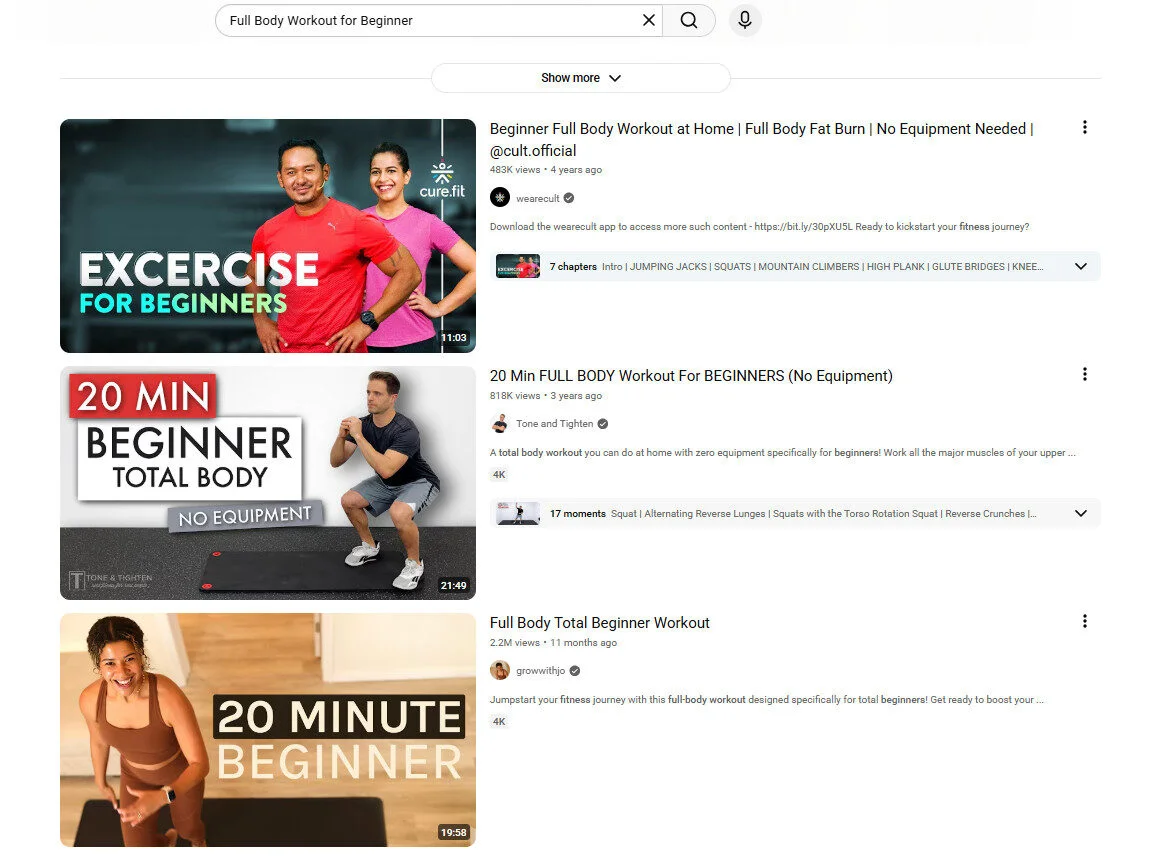
Avoid keyword stuffing. YouTube rewards videos that sound natural and genuinely helpful, not spammy. To do a full optimization checklist, you can go through our YouTube SEO article and reach more people.
In addition, you can use tools such as Google Keyword Planner, TubeBuddy, or even the YouTube search bar (watch the suggestions that pop up) to see what people are searching for in your niche.
2. Focus on Viewers Satisfaction
YouTube doesn’t just track how long people watch, it also cares about how they feel after watching. When viewers leave your video thinking, “That was actually useful!” or “I want to watch more from this creator,” the algorithm takes note.
To boost viewer satisfaction, make sure you:
- Deliver what you promise. Don’t use clickbait titles or thumbnails. Your video should deliver exactly what people expect after seeing the video thumbnail or title.
- Get to the point fast. Avoid long intros and keep your video moving with a clear structure.
- Add real value. Whether your video is short, solving a problem, teaching a skill, or simply entertaining, your viewer should walk away with something new.
For example, if your video is about “how to edit Instagram Reels on your phone,” don’t spend the first minute talking about why Reels are trending. Jump straight into showing the editing process; that’s what viewers came for.
When people feel satisfied, they’re more likely to rewatch, like, share, or check out your next upload, and that’s exactly what the YouTube algorithm loves.
3. Stick to the Schedule and Video Format that Works for You
You don’t need to post every day or every week to grow on YouTube – what really matters is consistency. So, upload video on a schedule your audience can count on, whether that’s once a week or twice a month. For example, if you consistently post every Friday at 8 PM, your viewers will start expecting your videos at that time and may even make it part of their routine to visit your channel and watch.
To find the right time and day, check your YouTube Analytics (or start with our guide on the best time to post on youtube) to see when your viewers are most active, and try to upload a little before those peak hours. When you post consistently at the right times, it gives the algorithm a signal that your channel is active and dependable.
Also, pay attention to what kind of videos your audience connects with the most, whether it’s tutorials, vlogs, or reviews. Once you find a format or style that works, stick with it and make it your signature. A consistent tone and format not only help build your brand but also keep viewers coming back because they know what to expect from you.
4. Use Shorts to Get Discovered
YouTube Shorts are one of the fastest ways to get your content in front of new viewers. They appear in a dedicated feed where people scroll quickly, making them perfect for short, punchy videos that grab attention fast.
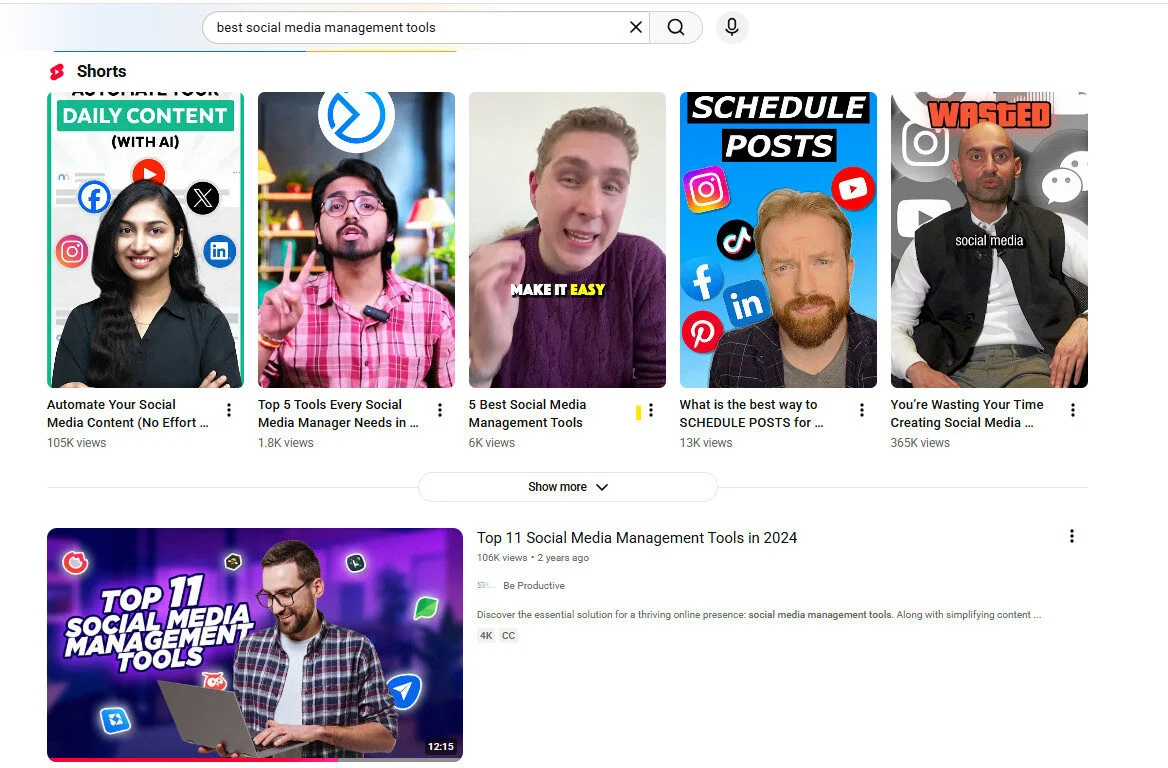
You can create Shorts to:
- Share bite-sized tutorials or quick tips
- Tease a longer video on your channel
- Highlight product features or fun behind-the-scenes moments
For example, if your channel focuses on personal growth, you could post a Short like “Top 5 self-help books to read in 2025,” quick, valuable, and shareable.
Keep your videos energetic and get to the main point in the first few seconds. When viewers watch your Shorts till the end (or rewatch them), YouTube picks up on that engagement and shows them to even more people.
5. Write Clickable Titles and Thumbnails (That Aren’t Clickbaity)
Your title and thumbnail are what convince people to click; they’re your video’s first impression. A strong title can instantly boost your click-through rate (CTR), which YouTube tracks to decide how often to recommend your content.
Here’s how to make your titles stand out:
- Use curiosity or a small tease – “This simple change doubled my views!”
- Add numbers or lists – “5 mistakes every new YouTuber makes”
- Keep it short – under 60 characters, so it doesn’t get cut off in search results
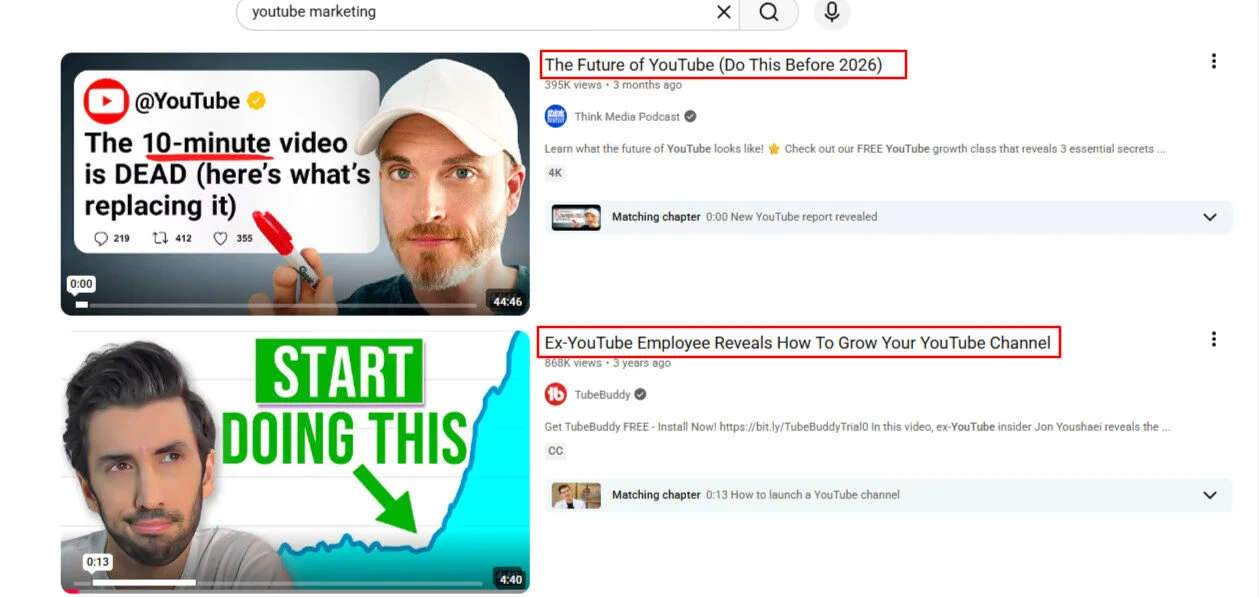
And don’t forget your thumbnail, as title and thumbnail both work together.
- Use clear, close-up visuals with expressive faces
- Include short text or keywords that match your title
- Keep a consistent style so viewers recognize your channel instantly
Just make sure your title and thumbnail match what’s inside. Misleading clicks might get short-term views, but if people drop off early, YouTube will stop recommending your video.
6. Group Your Similar Videos into Playlists
YouTube Playlists aren’t just for organization, they’re one of the smartest ways to keep viewers watching longer. When one video ends, the next starts automatically, which boosts your total watch time, a major signal the YouTube algorithm loves.
Here’s how to make the most of playlists:
- Group videos by topic or theme, like “Beginner SEO Tips” or “Quick Marketing Hacks.”
- Create step-by-step series (for example, “Part 1: Setting Up Your YouTube Channel” → “Part 2: Creating Your First Video”).
- Add a short description to each playlist so viewers know what to expect.

It’s as simple as the longer people stay watching your playlists, the stronger your videos perform across the platform, and are more recommended to new people.
7. Optimize for a Global Audience
If your audience isn’t limited to one country, your content shouldn’t be either. YouTube rewards videos that perform well with diverse audiences, and a few smart adjustments can help your channel go global.
Here’s how to do it:
- Translate titles and descriptions: YouTube lets you add multi-language metadata so your videos appear in searches across different regions.
- Add subtitles in multiple languages: Subtitles help non-native speakers (and silent scrollers) engage with your content more easily.
- Post at smart times: If you have a global audience, schedule uploads during overlapping time zones like early afternoon EST, so your video reaches both U.S. and European viewers when they’re active.
These small changes can make a big difference in helping your content travel further and perform better worldwide.
8. Reply to Comments and Stay Active with Community Posts
YouTube loves creators who interact with their audience, and so do viewers. When you reply to comments or start conversations, it signals to YouTube that people are engaged and interested in your content.

Here’s how you can make the most of it:
- Reply quickly: Try to respond to the first few comments within a day of posting. It builds connections and boosts early engagement.
- Pin thoughtful comments: Highlight great feedback or add your own pinned question to spark discussion.
- Use Community Posts: Share polls, updates, sneak peeks, or even memes to keep your channel active between uploads.

For example, if you run a phone review channel, you could post a poll like “What is ideal review video length?” or “Which smartphone should we review next?” It keeps your audience involved and coming back for more.
Not everyone wants to watch an entire video; sometimes, viewers just want to jump to the part that matters most. Adding chapters and timestamps helps them do exactly that.
Break your video into clear sections (like “Step 1: Setup,” “Step 2: Edit,” “Step 3: Publish”) so people can skip ahead without getting lost.

This not only improves the viewing experience but also boosts your visibility; YouTube and even Google can show these chapters as clickable snippets in search results.
For example, if you upload a “How to Start a Podcast” video, add chapters for “Choosing Equipment,” “Recording Tips,” and “Uploading to Spotify.” It makes your video more user-friendly and discoverable.
10. Use End Screens and Cards to Keep Viewers Watching
Don’t let your audience click away too soon, guide them to your next video instead. End screens and cards are perfect for keeping viewers engaged by suggesting related content right when they’re most interested.
You can add a card mid-video (like when you mention another tutorial) or an end screen in the last 5-20 seconds that links to your next video or playlist.
When you keep viewers watching, you’ve basically done YouTube’s job for them. The algorithm exists to keep people on the platform, watching one video after another, so if your content does that, YouTube will reward you by recommending it more often.
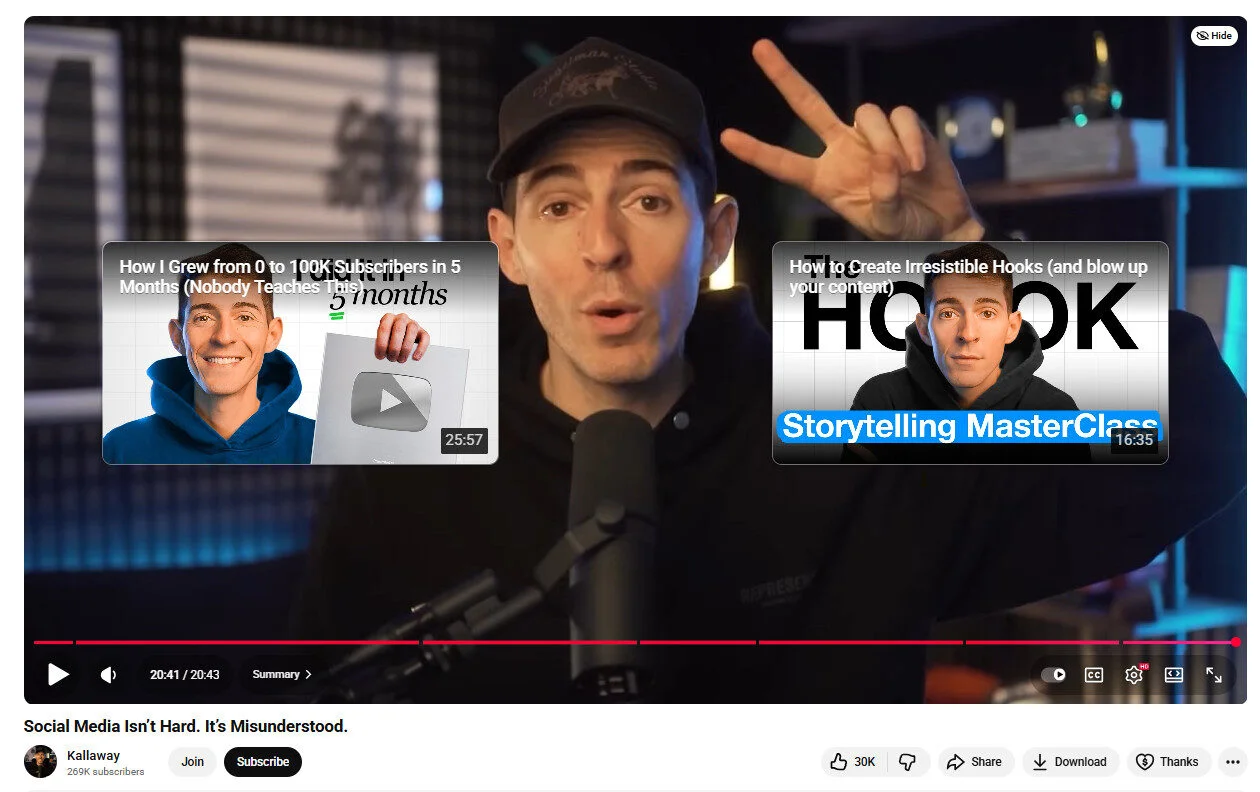
For example, if your video is “How to do YouTube marketing,” your end screen could recommend “How to grow from zero to 100k followers,” or “Best YouTube marketing tips for 2025.” It feels natural and keeps viewers exploring your channel longer.
11. AB Test Video Thumbnails, Titles, and Lengths
There’s no “perfect” video length on YouTube, what matters most is how long people stay hooked. Whether your video is 2 minutes or 20, the goal is to keep viewers watching until the end.
Start by checking your Audience Retention graph in YouTube Analytics. It shows where people lose interest, maybe your intro is too long, or your outro drags on. Adjust your pacing and structure based on that data.
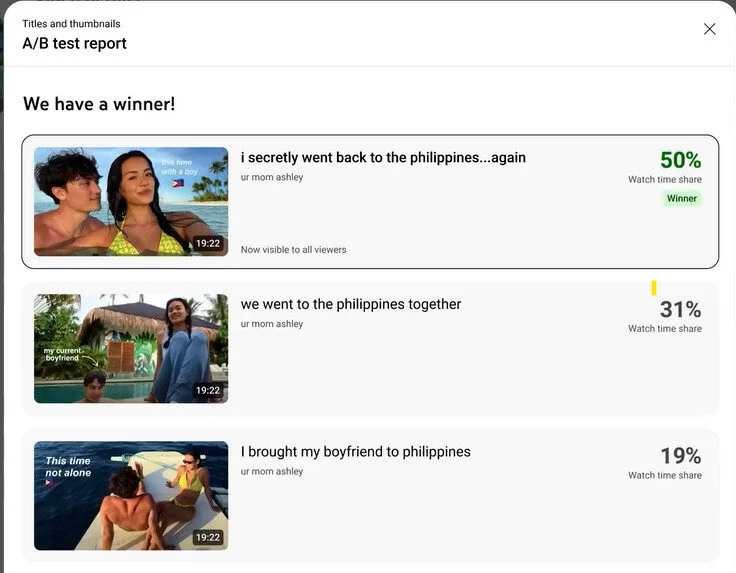
Don’t stop there, keep experimenting with thumbnails and titles, too. Swap your thumbnail design, try a new font or facial expression, or test a different title format like: “I Tried Waking Up at 5 AM for a Week – Here’s What Happened” vs. “What Happens When You Wake Up at 5 AM for 7 Days”
Track your CTR (click-through rate) after each change to see what works best. The more you test and tweak, the better you’ll understand what grabs attention and keeps it.
12. Monitor Your Competitors and Google Trends for Fresh Ideas
If you want to grow faster on YouTube, keep an eye on what’s already working in your niche. Studying your competitors helps you spot trending topics, formats, and styles your audience already enjoys and lets you find your own twist on them.
Use tools like Google Trends or YouTube Search Predictions to see what people are searching for right now or compare multiple topics to finalize the next video topic. For example, if “iPhone 17” is trending, you could make a video comparing your “top five iPhone 17 alternatives under $500.”
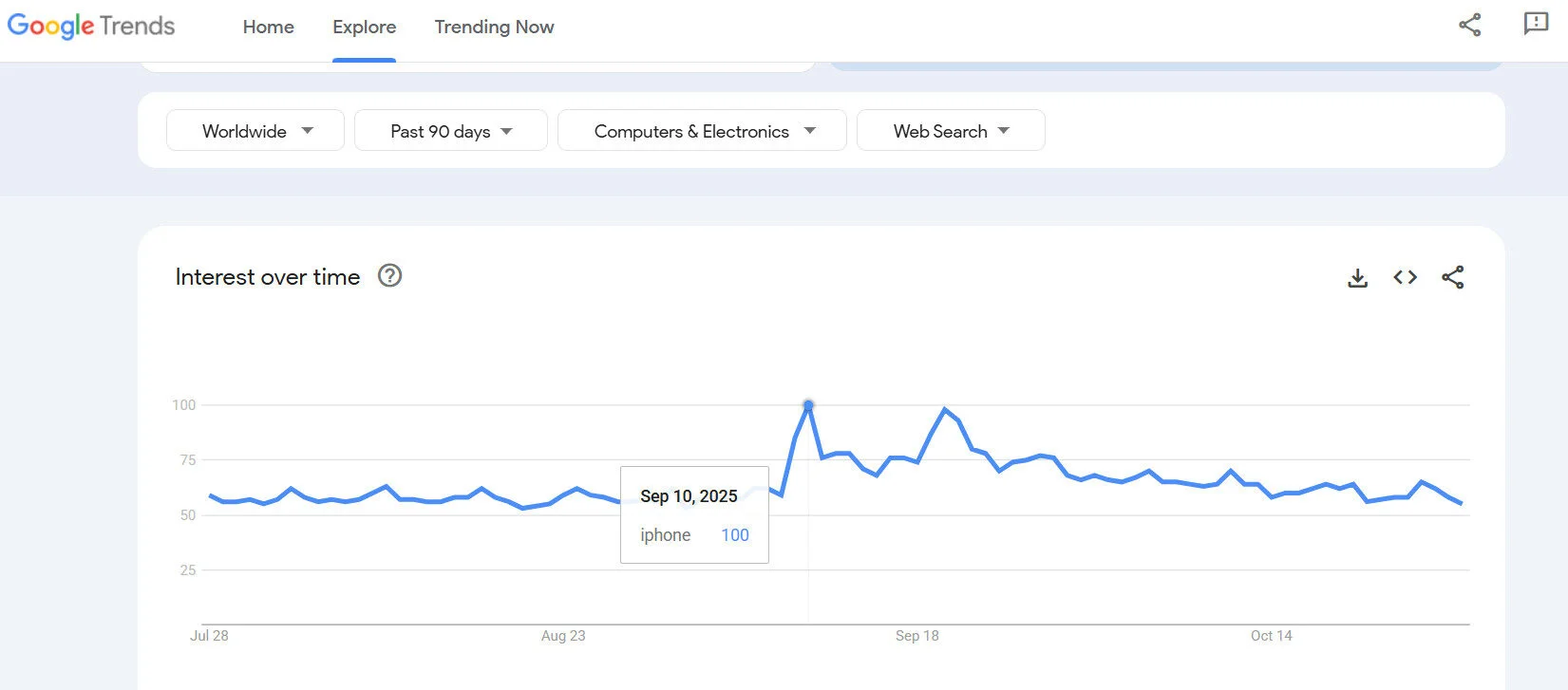
Also, check what’s performing best on similar channels, look for videos with sudden spikes in views or engagement. Ask yourself why they worked: was it the topic, title, or timing?
Then use that insight to plan your next upload around topics people are already excited about, but with your unique angle and voice.
Final Thoughts on the YouTube Algorithm
The YouTube algorithm isn’t something to fear; it’s a system built to connect the right content with the right audience. Whether you’re creating long-form videos or short, snappy clips, the goal remains the same: keep your viewers engaged and satisfied.
Focus less on “beating” the algorithm and more on understanding what your audience enjoys. Use analytics to learn from their behavior, experiment with formats, and deliver consistent value.
Shorts can give you quick visibility and reach, while long-form videos help you build depth, authority, and loyal subscribers. Together, they’re a powerful combination for sustainable growth.
As YouTube continues to evolve with AI, personalization, and smarter discovery systems, one thing remains constant: authentic, high-quality content always wins. If you create with purpose and engage your community, the algorithm will work for you, not against you.
